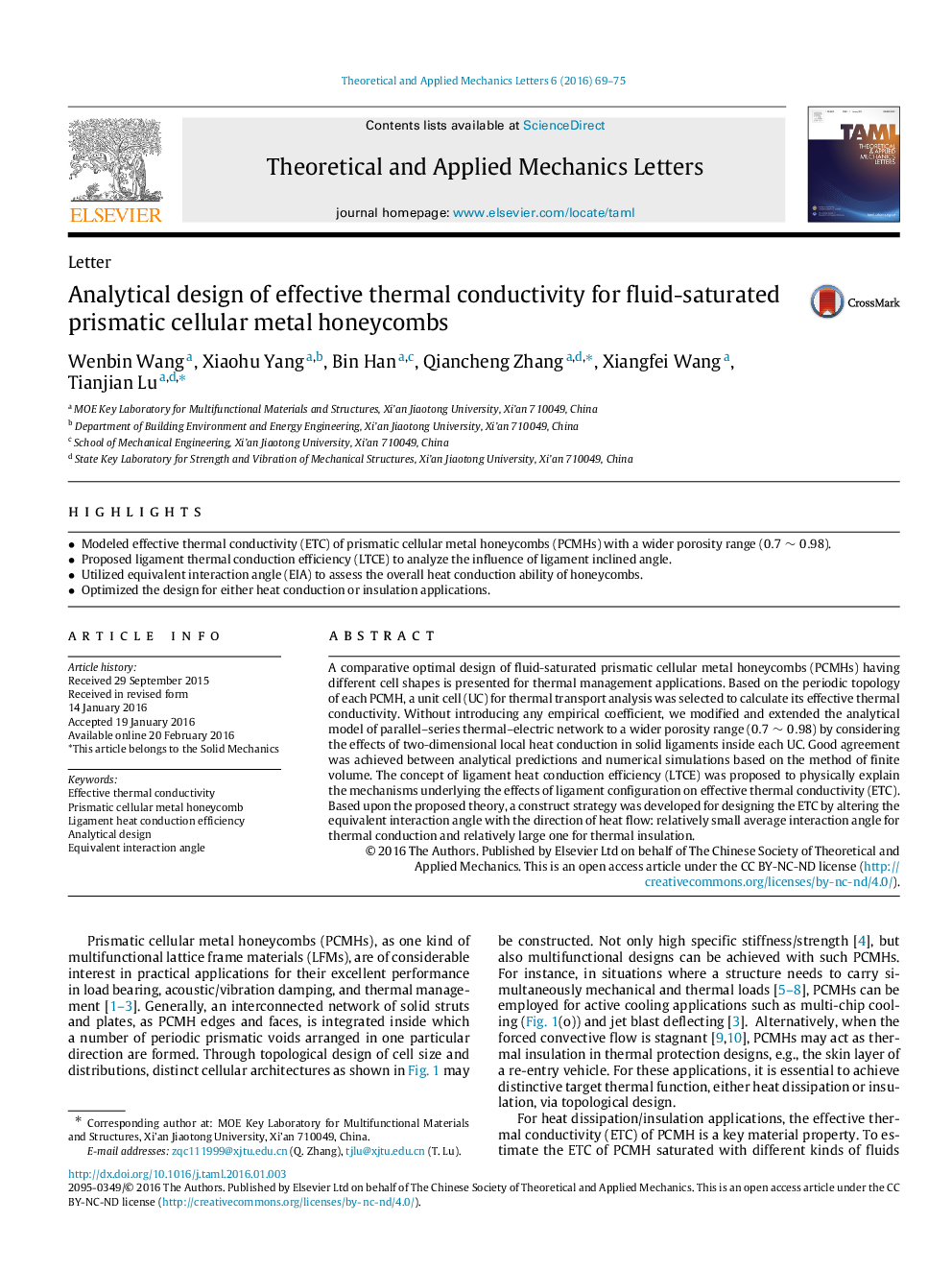| Article ID | Journal | Published Year | Pages | File Type |
|---|---|---|---|---|
| 808183 | Theoretical and Applied Mechanics Letters | 2016 | 7 Pages |
•Modeled effective thermal conductivity (ETC) of prismatic cellular metal honeycombs (PCMHs) with a wider porosity range (0.7∼0.98).•Proposed ligament thermal conduction efficiency (LTCE) to analyze the influence of ligament inclined angle.•Utilized equivalent interaction angle (EIA) to assess the overall heat conduction ability of honeycombs.•Optimized the design for either heat conduction or insulation applications.
A comparative optimal design of fluid-saturated prismatic cellular metal honeycombs (PCMHs) having different cell shapes is presented for thermal management applications. Based on the periodic topology of each PCMH, a unit cell (UC) for thermal transport analysis was selected to calculate its effective thermal conductivity. Without introducing any empirical coefficient, we modified and extended the analytical model of parallel–series thermal–electric network to a wider porosity range (0.7∼0.98) by considering the effects of two-dimensional local heat conduction in solid ligaments inside each UC. Good agreement was achieved between analytical predictions and numerical simulations based on the method of finite volume. The concept of ligament heat conduction efficiency (LTCE) was proposed to physically explain the mechanisms underlying the effects of ligament configuration on effective thermal conductivity (ETC). Based upon the proposed theory, a construct strategy was developed for designing the ETC by altering the equivalent interaction angle with the direction of heat flow: relatively small average interaction angle for thermal conduction and relatively large one for thermal insulation.
